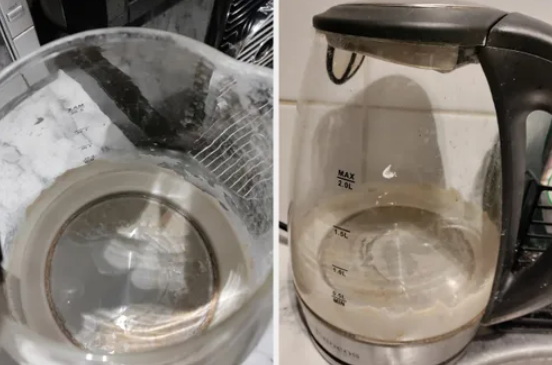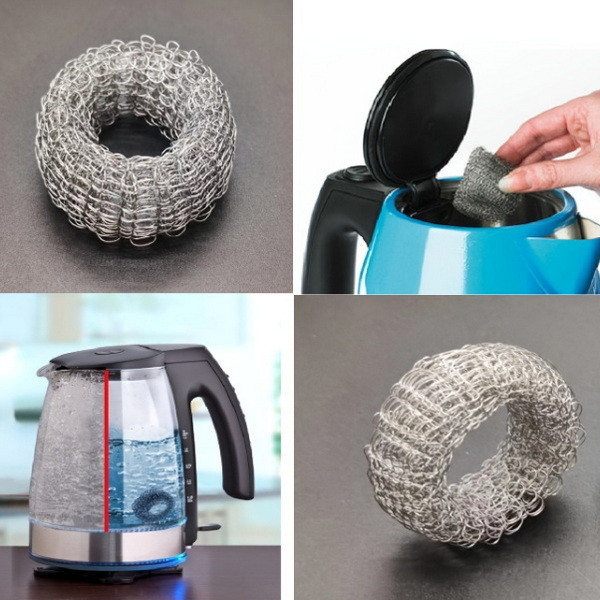

Views: 222 Author: Rebecca Publish Time: 2025-04-02 Origin: Site








Content Menu
>> 5. Using Commercial Descalers
● Tips for Preventing Limescale Buildup
● Choosing the Right Descaling Method
● Impact of Limescale on Kettle Longevity
● FAQ
>> 1. What is Limescale and Why Does it Form?
>> 2. How Often Should I Descale My Kettle?
>> 3. Can I Use Other Types of Vinegar for Descaling?
>> 4. Is Citric Acid Safe to Use?
>> 5. Can I Use Baking Soda for Heavy Limescale?
Limescale, also known as mineral scale, is a common problem in electric kettles, especially in areas with hard water. It is formed from the calcium and magnesium salts present in water, which precipitate out when the water is heated. Over time, this buildup can affect the performance and longevity of your kettle, making it less efficient and potentially altering the taste of your beverages. In this article, we will explore various methods to remove limescale from an electric kettle, including the use of lemon juice, vinegar, baking soda, citric acid, and commercial descalers.

Limescale is not harmful to health, but it can cause several issues with your kettle:
- Efficiency Reduction: Limescale acts as an insulator, reducing the kettle's heating efficiency and increasing energy consumption.
- Taste Alteration: It can impart a metallic taste to water and beverages.
- Aesthetic Impact: Limescale buildup makes the kettle look dirty and old.
Limescale forms when water is heated, causing the minerals to precipitate out. Hard water areas are more prone to this issue due to higher concentrations of calcium and magnesium.
Lemon juice is a natural and effective way to remove limescale. The citric acid in lemons helps dissolve the mineral deposits.
Steps:
1. Fill the Kettle: Pour lemon juice into the kettle until it covers the limescale. You can use fresh lemons or bottled lemon juice.
2. Add Water: Fill the kettle with water to ensure the lemon juice covers all areas.
3. Boil and Soak: Boil the mixture, then let it sit for about 30 minutes to allow the citric acid to work.
4. Rinse: Empty the kettle and rinse it thoroughly with clean water.
Vinegar is another common household item used for descaling. It is effective and inexpensive.
Steps:
1. Mix Vinegar and Water: Fill the kettle half with distilled white vinegar and half with water.
2. Boil: Boil the mixture.
3. Stand and Rinse: Let it stand for about 30 minutes to an hour, then pour out the mixture and rinse the kettle thoroughly with clean water.
4. Repeat: Boil fresh water in the kettle a few times to remove any vinegar taste.
Baking soda is a mild abrasive that can help remove stubborn stains and odors.
Steps:
1. Mix Baking Soda and Water: Add 1-2 tablespoons of baking soda to a cup of water in the kettle.
2. Boil and Soak: Boil the mixture, then let it sit for about 20 minutes.
3. Scrub and Rinse: Use a soft sponge to scrub the interior, then rinse thoroughly with clean water.
Citric acid is a powerful natural descaler that works quickly and effectively.
Steps:
1. Add Citric Acid: Boil water in the kettle, then add 1-2 tablespoons of citric acid.
2. Stand and Rinse: Let it sit for about 15-20 minutes, then pour out the mixture and rinse the kettle thoroughly with clean water.
Commercial descalers are available in powder or liquid form and are specifically designed to remove limescale.
Steps:
1. Follow Instructions: Use the descaler according to the product instructions.
2. Boil and Rinse: Boil the mixture in the kettle, then rinse thoroughly with clean water.

- Use Filtered Water: If possible, use filtered water to reduce mineral content.
- Dry the Kettle: After use, dry the kettle to prevent water from standing and causing mineral deposits.
- Regular Cleaning: Regularly descale your kettle to prevent buildup.
- Avoid Overboiling: Only boil the amount of water needed to prevent excessive mineral buildup.
- Clean the Lid and Spout: Regularly clean the lid and spout to prevent residue buildup.
Regular cleaning is crucial for maintaining your kettle's performance. Here are some additional tips:
- Unplug and Cool Down: Before cleaning, ensure the kettle is unplugged and cooled down.
- Exterior Cleaning: Use a damp cloth to wipe the exterior of the kettle.
- Check the Filter: If your kettle has a removable filter, clean it regularly to prevent impurities from affecting the taste of your water.
To make your kettle more energy-efficient:
- Control the Warming Temperature: Set an appropriate warming temperature based on your needs.
- Turn Off When Not in Use: Unplug the kettle when not in use to save energy and increase safety.
- Avoid Running an Empty Kettle: Never turn on an empty kettle, as this can damage the heating element.
- Avoid Washing with Running Water: Do not wash the kettle with running water, as this can damage the appliance.
- Storing Water in the Kettle: Avoid storing water in the kettle when not in use, as this can lead to limescale buildup.
- Using Harsh Chemicals: Avoid using harsh chemicals that can damage the kettle's interior or affect the taste of your water.
When choosing a descaling method, consider the severity of the limescale buildup and your personal preferences regarding natural versus chemical methods. For example, if you prefer natural methods, lemon juice or vinegar might be suitable. However, for heavy buildup, citric acid or commercial descalers may be more effective.
The quality of your water plays a significant role in limescale formation. Hard water, which contains higher levels of minerals, is more likely to cause limescale buildup. If you live in an area with hard water, consider using a water filter to reduce mineral content before boiling.
Limescale buildup can significantly reduce the lifespan of your kettle by affecting its heating efficiency and causing corrosion over time. Regular descaling can help extend the life of your kettle and maintain its performance.
Removing limescale from an electric kettle is essential for maintaining its efficiency and longevity. Methods like lemon juice, vinegar, baking soda, citric acid, and commercial descalers are effective and easy to use. Regular descaling and preventive measures can help keep your kettle in good condition.

Limescale is formed from calcium and magnesium salts in water that precipitate when heated. It is common in areas with hard water.
Descaling frequency depends on water hardness and usage. For hard water areas, descale every month, while softer water areas may require descaling every three months.
While white distilled vinegar is most effective, other types like apple cider vinegar can be used but may require additional boils to remove limescale.
Yes, citric acid is safe and effective for descaling. It is biodegradable and leaves no chemical residues.
Baking soda is best for light mineral deposits and odors. For heavy limescale, vinegar or citric acid may be more effective.